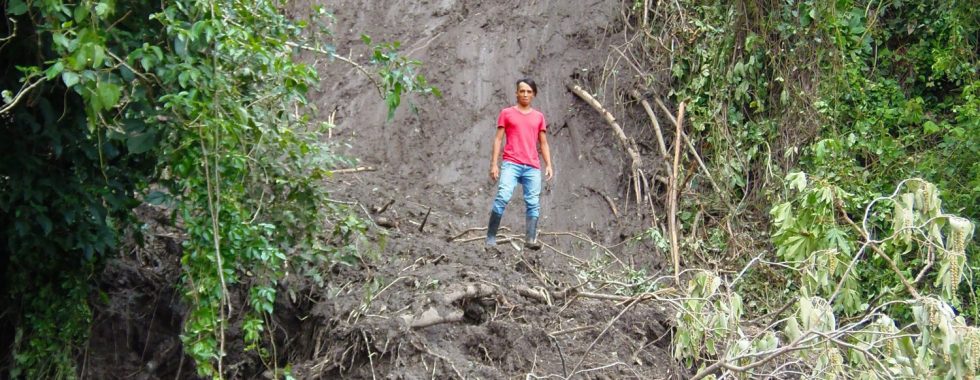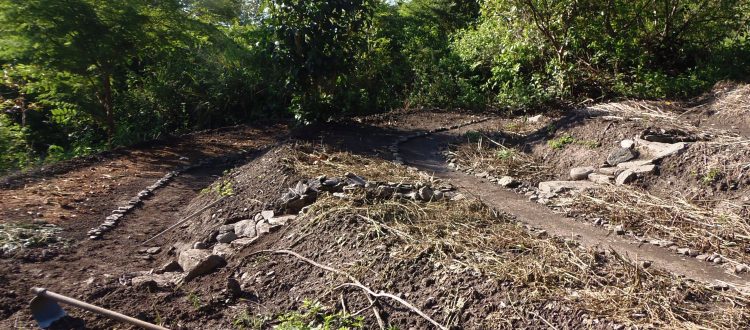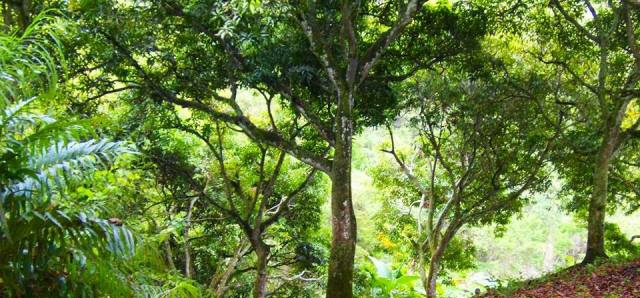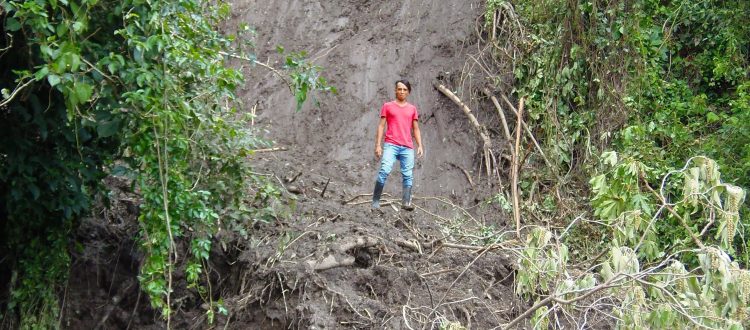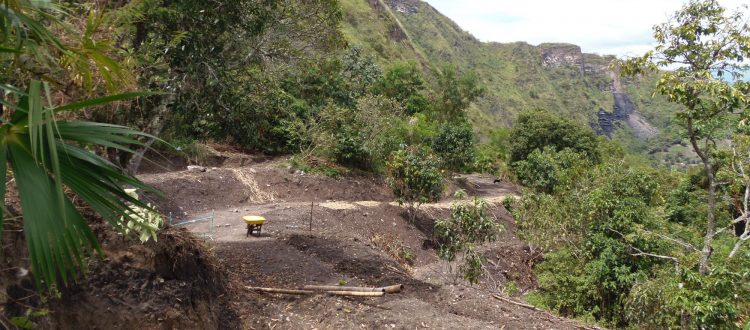We had quite a wet rainy season earlier this year and then we were hit by a severe rainstorm in May. At sunrise we wanted to look around a bit, because we got quite some water (around 150 mm in just a few hours). To our big astonishment we saw that the area around us was hit by some severe landslides. One of the bigger mudslides came down the entire mountain at the higher side of our land.

The picture above gives an idea of the amount of mud that came down, the one below shows the entire path it took. The vertical distance is slightly over 100 meters.

The mix of mud and trees came to a stop between our two key point dams. The small dam now has an island of mud and tree branches.

About 20 meters from the house of our neighbors above us another slide came down, but it was stopped by some bigger trees just over the fence line.

These two landslides were not caused by instability of the slopes, but by concentrated water flows humans created. The big slide is the channel where the water comes down from a mobile phone antenna, a hard surface area of about 1000 square meters. The smaller one is where the rainwater exits the road to come down the mountain. This severe rainstorm followed weeks of rain that already saturated the soil to quite some depth. So all this extra water ended up totally eroding these channels. Once mud gets flowing down these slopes it takes everything down with it.
Slides everywhere
On the other side of our farm big parts of the slopes were washed down too. These were all steep slopes that didn’t have a lot of stability. Everything on the picture below that is now dark brown was green the day before.

The landslide on the foreground in the picture above came down over a 100 meters and crashed on the public road going down the valley.

The road going up was already very eroded, the way down was now also blocked. It took a week before it was cleared.
Did our earthworks cope?
With all this rain our water control systems got a good test. The terraces all looked fine:

We did not see much runoff coming down from the terraces, most of the rain infiltrated the ground. Because the amount of rain is high, we do see water coming up in the lower terraces. Through small streams and channels this excess of water is transported to our valley dam.

That valley dam was installed a little over two years ago, and with this event it finally filled up to full capacity for the first time. All those springs everywhere though keep adding water to it, so the excess water now has to leave our land as calmly as possible. In the middle on the picture below you can see the overflow of the valley dam.

When we came here three years ago any severe rain event created huge flows of water, going down deeply eroded gullies fast, to become someone else’s problem on the lands below ours. When the rains ended the flows would quickly dry up. Today all that water flows calmly over terraces and through swales, gets caught in dams and infiltrates the ground. Excess water is slowly released back to the surface and transported away calmly in a process that takes days instead of hours.

The overflow of the valley dam ran for over 2 days and gave a calm constant flow of clear water. Some springs kept running for more than 2 weeks.

We think we did a good job so far with controlling the sometimes excessive rains we experience in the tropics. We look forward to one day finishing the work we still have to do.
The improvised corral for the pigs got a little wet too, but the piglets are two months old and can handle it. We do need to build a permanent corral soon now, so we can better manage the process of weaning the next group of piglets than we could this time. Lots of work still to do.


